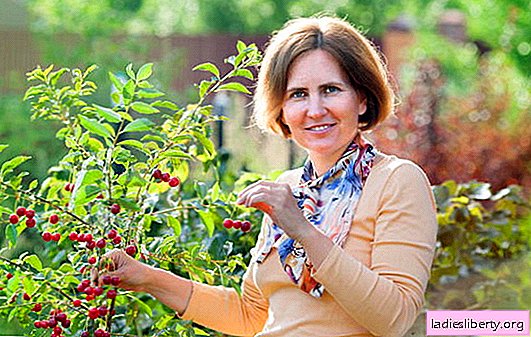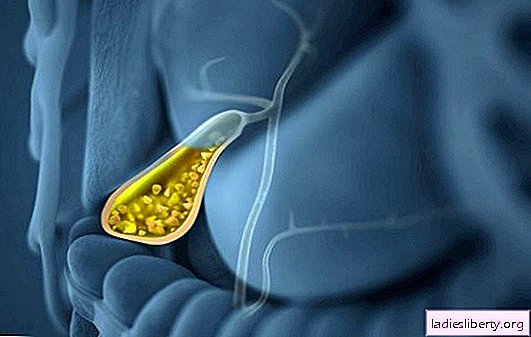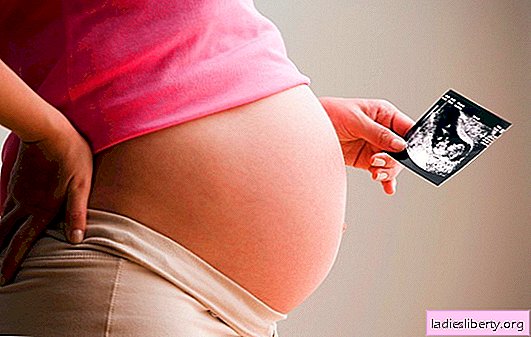
Common cherry - from time immemorial one of the most beloved trees in the gardens of Russia.
There are two forms: bushy and tree-like.
Varieties of the first type are low (up to three meters), early fruiting (already in the second or third year). Life expectancy is 15-20 years.
Tree cherries - tall trees (6-7 m), begin to bear fruit in the fourth - fifth year. Duration of fruiting is 15-20 years.
Life expectancy is about thirty years.
It does not tolerate acidic soils and high standing groundwater. They should be located no closer than two meters from the surface.
Photophilous cherry. With insufficient lighting, fruit bearing shifts to the periphery of the crown due to the dying off of bouquet branches inside it.
The best soils are loam. Sandy land with a lack of nutrients is not suitable.
Cherries are winter-hardy and drought-resistant, undemanding to growing conditions.
How to care for cherries: variety selection
The bulk of the varieties is self-infertile. They form an ovary only in case of pollination of flowers with pollen of another tree and necessarily a different variety. This requires careful selection of pollinators, and for different varieties they can vary significantly. Good pollinators are usually self-fertile varieties. Vladimirskaya is a universal pollinator. Varieties Griot of Moscow and Lyubskaya also cope well with this role.
How to care for cherries: planting
Cherry is usually planted in the spring, but it is allowed to do this in the fall.
Pits are cooked in size:
• depth - 0.6-0.7 m;
• diameter - 0.8-0.9 m.
The surface layer of the earth from the pit is mixed with peat or humus (up to fifteen kilograms per square meter).
Mineral fertilizers are also poured there: in the spring it is enough to add 0.300 kg of nitrophosphate, in the fall 0.300 kg of superphosphate, 0.100 kg of potassium sulfate and 0.600 kg of ash will be required. One glass of chalk or lime is mixed here.
The roots during planting necessarily straighten. It is usually recommended to place the root neck flush with the ground. However, in recent years, due to mild winters and the frequent change of frosts and thaws, cherries have a problem - the root neck warms up. This may result in the death of trees. Therefore, it is better to plant, raising the root neck 10-15 cm above the soil level.
After planting, the trunk circle is abundantly watered and sprinkled with compost to a layer of up to five centimeters.
Neighborhood with other plants
Cherry is not indifferent to nearby plants. Most oppress her
• conifers, apple tree, honeysuckle;
• umbrella vegetables (carrots, parsley, celery);
• from decorative ones - lilies, daffodils, tulips and spirea.
But there are cultures that, on the contrary, have beneficial effects on cherry trees. The most beneficial effect on them is exerted by hazel grouse flowers, which should be planted in the near-stem circle. Great neighborhood with cherries with barberry. Berry crops - strawberries, raspberries and yoshta, vegetables (turnips and peas) and ornamental plants - gladioli, hosts, mock-up, are a little weaker, but also quite intense.
How to care for cherries
Soil content
Loosening is carried out three to four times during the growing season. The depth of tillage is eight to ten centimeters. Every year in the autumn they dig up the soil for ten to fifteen centimeters.
Watering
Watering according to the phases of tree development:
• in the phase of growth of shoots - approximately June;
• during fruit loading and ripening.
Irrigation is carried out until the soil is moistened to 0.30-0.40 m in depth. This is about three to four buckets per square meter. However, the fruits crack due to excess moisture.
In a dry summer, the frequency of watering is once every half a month.
How to care for cherries: top dressing
Cherries are fed in spring and early summer. To do this, prepare a solution of urea or complex fertilizers, for example, "Ideal". One - two tablespoons of fertilizer are bred in ten liters of water. Trees are watered with this solution. They also carry out foliar top dressing on the leaves in the first half of summer.
Every three to four years they bring organic matter. The dose is 6 kg per 1 square. meter. Upon entry into full fruiting, the norm is increased to 6-8 kg.
Cherry does not tolerate acidic soils. Excessive acidity can cause flowers to fall and ovaries. Therefore, once in five years, lime fertilizers are applied. They are used both in dry form and in liquid. For liming, dolomite flour, lime or chalk is used.
They are scattered not near the trunk, but on the border of the crown projection, with a strip width of at least 1 m. Calcium substances cannot be introduced together with manure.
How to care for cherries: pruning (photo)
Pruning cherries is carried out in early spring. Before flowering, pruning must be completed. If you are late with this procedure, gum-detecting and even drying out of the trees are possible.
In grafted cherries, the entire rootstock is removed, trying to cut it as low as possible.
Cherry is prone to thickening the crown. As a result, pruning is vital for her. You cannot delete many branches at a time. When freezing trees, pruning is usually transferred to a later date - until the buds are biting.
Formative pruning is carried out for 3-4 years after planting seedlings in the garden.

How to care for cherries: pests and diseases (photo)
Pests:
Cherry aphid
Widespread. Winters at the ends of shoots in the egg stage. The exit of the larvae from the eggs begins in the phase of budding.
Larvae are concentrated in masses on the tops of young growth and populate the leaves, which are deformed as a result.
Control measures
• Agrotechnical. Destruction of weeds and removal of root shoots.
• Chemicals. In the phase of budding, to destroy wintering eggs, the first treatment is carried out with drugs. The second treatment is carried out before flowering to destroy the larvae and female founders. After flowering, treatments are carried out as necessary - when a pest appears. Fufanon, kemifos, antitlin or tobacco dust are used for processing.
Cherry fly
One of the main and dangerous pests of cherries. It damages 30-50% of the fruits, mainly middle and late varieties. The fruits rot and fall.

Cherry fly - a small black shiny insect, the head and legs are yellow. Harmful larvae, white, legless "worms" in the fruits of cherries and cherries. A pupa flies in the soil overwintering at a depth of 2-5 cm.
Control measures
• Agrotechnical. Removing fallen fruits, digging the soil.
• Chemicals. Spraying cherry trees before the laying of the pest by one of the insecticides - Fufanon, Inta Vir. Two weeks later, with the onset of "milk ripeness of the fetus", a second treatment with the same drugs is carried out. For early-ripening varieties, one spraying is needed, for late-ripening - at least two treatments are carried out.
Slimy cherry sawfly
It is found in leaves and fruits. Shiny black insect 0.5 cm long, 1 cm larva yellow-green, secreting black mucus.

Control measures
• Agrotechnical. Cultivation and autumn digging of the soil.
• Chemicals. Processing during the summer and oviposition, against larvae a week after flowering. Use fufanon or kemifos.
Cherry shoot moth
The butterfly is about one centimeter long, the caterpillar is from 0.5 to 1 centimeter, greenish yellow with a brown head.
Disease
Coccomycosis
Coccomycosis is ubiquitous. Leaves, to a lesser extent young shoots, stalks, fruits, are affected.

In May, reddish-brown spots appear at the sites of infection on the leaf surface, later - white or pinkish deposits - fungal spores. Heavily affected leaves fall in July. On the stalk, the spots are small, sharply limited, merging, degenerate into sores.
Relatively large brown spots form on the fruits. Such fruits become ugly, become watery and tasteless. In later varieties of cherries, they dry out and fall off. Trees are weakened and unproductive.
Control measures
• Agrotechnical. In autumn, at the end of leaf fall in rows and near-trunk strips, fallen leaves are collected, embedded in the soil or burned.
• Chemicals. In the phase of kidney swelling - 3% Bordeaux mixture, or 1% copper sulfate, or Abiga-Peak 50 g / 10 l of water. If spots are found on the leaves - Abiga Peak 50 g / 10 l of water. After the collection of cherries with a further manifestation of coccomycosis, Abiga-Peak is used.
Kleasterosporiosis
Distributed everywhere. Infects all green organs of the plant. Round brown spots with raspberry fringing appear on the leaves. After 2-3 weeks, they fall out, forming holes.

Control measures
• Agrotechnical. In the fall, after falling leaves, dry fruits and leaves are raked and destroyed. In the spring, dry branches are cut before the buds swell.
• Chemical
- the first spraying is carried out before the buds open or at the beginning of this phenophase - with 1% copper sulfate or Bordeaux mixture 1-3%;
- the second is done before flowering with the same fungicides, or at the beginning of flowering with chorus - 2-3.5 g / 10 l of water;
- the next one to three treatments are carried out with Abiga- Peak or chorus fungicides immediately after flowering, then at intervals of ten to twenty days.
Moniliosis
Distributed everywhere.

Moniliosis develops rapidly in spring in cold and humid conditions during flowering. There are two forms of moniliosis. The first is a “monilial burn,” which affects flowers, leaves, and shoots when, in wet weather, an ash-gray sporulation forms on them. Affected branches are the source of infection next year.
The second form of the disease is "rot of the fruit." During the ripening period, a brown rotten spot forms on the fetus, then covering the entire fetus. Rotten fruits dry out and are a source of infection.
Fruits are more often affected in places of mechanical injuries, including when damaged by insects, when healthy fruits come into contact with patients.
Low air temperature delays flowering, and high humidity contributes to the development of the disease and its spread.
Control measures
• Agrotechnical. To eliminate the sources of spread of spores of the causative agent of moniliosis in the winter and spring before the swelling of the kidneys, pruning of damaged branches is carried out, dry ovaries, fruits are harvested and burned. During the flowering period, cutting and destruction of shoots affected by the disease is carried out. They are cut out, grabbing healthy wood.
• Chemicals. Early spring spraying (for swollen kidneys) is carried out with chorus, or 1% copper sulfate, or 1-3% Bordeaux mixture, or Abiga-Peak 50 ml / 10 l of water. In wet weather, cherry trees are treated with chorus before flowering and after it.











